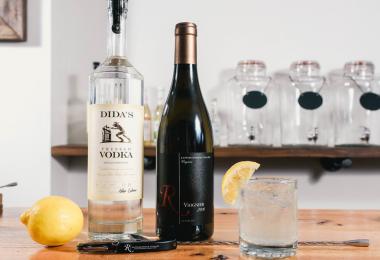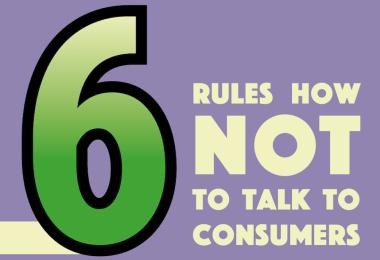If you’re an artisanal winemaker, is creating a brand important?
“Yes,” was the message from the Meininger’s International Wine Conference. “Does water need a strong brand?” asked Professor Karsten Kilian of the Faculty of Economic Sciences at the University of Applied Sciences Würzburg-Schweinfurt. “Water is interchangeable – it’s just water with some minerals. So the cheapest one should win.”
Except, as he pointed out, famous brands of water command far higher prices than those without known brands. “The brand is more important than the product,” he said. “Brands are strong resonance fields.”
Why brands are important
According to Roman Becker, founder and managing director of 2HMforum, a relationship management company, there’s a downside to the huge improvements in wine of recent years: consumers are finding it increasingly difficult to taste quality differences. “They’ve said subjectively they can’t draw a line between what’s being offered by one product and another,” he said. “If the customer can’t see the difference, they will look at the price, and that will be the deciding factor.”
Not only that, but loyalty is falling. “We don’t see that happy customers remain loyal. On the contrary, even happy customers are willing to change suppliers at the drop of a hat. Customer satisfaction is no longer the deciding factor.”
But if customers are turned into fans of the product, “price sensitivity goes down and they are willing to pay any price at all.” To create fans, said Becker, stay away from ambiguity at all costs – that is, don’t use words or images that have become meaningless through overuse. “Sustainability, efficiency, innovation,” are three examples that Becker used. Instead, attach unique words and images to your brand, to ensure you stand out.
It was a theme taken up by Juan Park from Wine Intelligence, who put up a picture of a shelf full of sake bottles. “You know what a brand is when it’s missing,” he said, noting it was impossible to decide on a sake without a brand cue.
Label design is therefore increasingly important, not just to make the bottle aesthetically appealing, but because consumers use the label as a way of understanding the wine. “Labels are signals,” said Park. Labels are not, however, brands. “We must not confuse what is the most attractive label with what is the strongest brand.”
The path to building a wine brand is, however, full of formidable obstacles. Park outlined a study of US consumers which found that 32% of wine drinkers could not recall the name of a single wine brand; 34% could recall one or two; one-quarter can recall three to five; and only 10% of consumers can recall six or more – and they were remembering big brand names, not small ones. “Marketing conferences say you can be niche and sell to a loyal audience, but that doesn’t happen,” said Park. “Normally, bigger brands enjoy greater loyalty. Familiar is best.”
He added that wooing committed wine lovers will not help to build a strong brand. “The ones that read wine magazines are not the route to growth, because they already know us.” He suggests targeting both committed and less committed consumers. “The brands that will sell the most are inclusive,” he said. “Brands are there to facilitate choice. Consumers use brands to help them choose.”
Rotkäppchen, the biggest-selling sparkling wine brand in Germany, is a perfect example of a wine that’s successful because it appeals to a wide range of consumers. “The consumers who are buying it are not a clearcut segment; it’s the German middle class,” said Cathrin Duppel, marketing director of Rotkäppchen-Mumm Sektkellereien.
Despite having a blockbuster brand in the portfolio, the company continues to develop new brands. “We always use the same marketing toolbox,” said Duppel. “First, understand the brand and the customer.” Define who the customer is. “We try to understand the relevant cluster and how big it is. Are they fully employed, are they retired?” Second, define the brand positioning. “We will define the USP [unique selling point] and the core brand values.”
The low-budget option
For wine companies without insights teams and big marketing budgets, there’s another way to build a brand: the halo effect. Work with a well-respected retailer, because their reputation casts a glow over the wines they sell.
“It used to be relatively easy to sell wine,” said Nikolas von Haugwitz, the then managing director of Germany’s Hawesko Holding, which owns both wine retail chains and a direct sales company. He showed an old wine ad, which showed nothing but bottles of wine. “The retail brand never appeared. It was always the wine that had the spotlight.” As the market became more competitive, he said, wines began to appear in beautiful settings, to emphasise their luxury nature. “As time went on, things changed further. Wine education became part of the PR mix. An attempt was made to teach people to become wine experts.”
That approach is a mistake, he said. “It’s too complicated. You would never teach a consumer that they have to become an expert to be allowed to try the wine.”
Today, said Von Haugwitz, it’s the retailer’s own brand that is being spotlighted. “Over the past 15 years, a lot of small wineries have appeared and we are seeing a lot of brands we didn’t see before.” This means consumers now have far more choice – but there’s also far more confusion. “Retailers are now in the process of developing into trusted brands in their own right. We are the ones that tell the story, we are the communicators.”
In other words, when customers trust the retailer, they will take trust the retailer’s products.
So for those who haven’t the resources to develop a major brand, perhaps the best advice is to do everything possible to get on the shelf of a credible retailer – and then work with them to build the brand.
Felicity Carter








